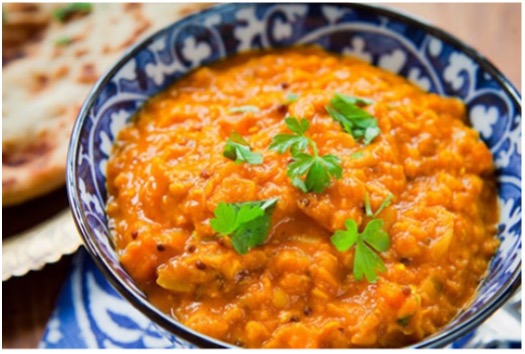May can be a wonderful time of year in Massachusetts. Flowers are blooming, garden beds are thawed, and summer is on the horizon. While late spring on its own is plenty to celebrate, the month of May is also Asian/Pacific American Heritage Month. The Asian American and Pacific Islander (AAPI) population in Massachusetts currently represents almost 8.5% of the total population. This number includes people with heritage across the entire Asian continent and all Pacific Islands. This broad region encompasses East Asian nations such as China, Korea, and Vietnam, South Asian countries like India, Pakistan, and Bangladesh, and islands across the Pacific Ocean such as Indonesia, the Philippines, and Hawaii.
Due to the wide swath of nations represented in AAPI culture, there is a lot to learn about and to celebrate. As in previous posts about celebrating culture, the MA SNAP-Ed team loves to celebrate by trying and sharing new foods. From sushi and soba in Japan to curry in India to breadfruit in Hawaii, Asia and the Pacific Islands have a lot to offer. Many traditional dishes were adjusted after being introduced in the United States, but the influence remains. Flavors and ingredients foundational to many Asian and Pacific Island dishes are staples in American diets, such as certain chili peppers, noodles, and tofu. Read on for some recipe ideas you can make at home that are inspired by the traditional dishes of the Asian continent and Pacific Islands.
Try a New Meal
There are many recipes you can use to celebrate Asian/Pacific Heritage Month simply on the MA SNAP-Ed website. On the Recipes page, you can specifically search for East Asian-inspired and South Asian-inspired recipes. Since this opens up a wide range of options, here are four ideas to get you started.

Toshikoshi Soba is a Japanese-inspired dish. Soba noodles are made of buckwheat, a whole grain, and they typically have a nutty flavor. This dish shows off the natural flavor of soba and can be modified for many different preferences. Try adding some additional vegetables or a different protein source if you like.

Masur Dal, which is essentially red lentils with onion, is a South Asian-inspired dish with roots in both Bangladesh and India. Lentils are full of protein and fiber, two important nutrients that keep you feeling full and energized. The spice combination in this dish makes it a perfect side to other South Asian dishes.

Chinese Congee is traditionally eaten for breakfast, similar to how other cultures may eat porridge or oatmeal. Unlike many classic American breakfasts though, congee is typically savory, cooked with vegetables and herbs. It is packed with vitamins and minerals thanks to the mix of veggies, which offers a great start to any day.

Chicken Adobo is a traditional dish from the Philippines. It requires a time investment upfront because you have to marinade the chicken overnight before cooking. The time to prepare it is worth it though. The marination leaves a delicious flavor in the chicken that is sure to please anyone.
Keep Cooking and Keep Learning
Making and enjoying food is a wonderful way to celebrate culture any time of year, but especially during significant months like this one. During Asian/Pacific American Heritage Month, try a new recipe, use some new ingredients, or add a different spice. Doing any of these things can honor the major influences Asian and Pacific Islander culture has had on American cuisine. Whether it be adding more whole grains to your day with soba noodles or expanding your breakfast regimen with congee, trying new recipes can be beneficial in many ways. These featured dishes, and many more on the Recipes page, are full of essential nutrients to keep you healthy this May.
Did you find this blog post helpful? Please click the heart button!




